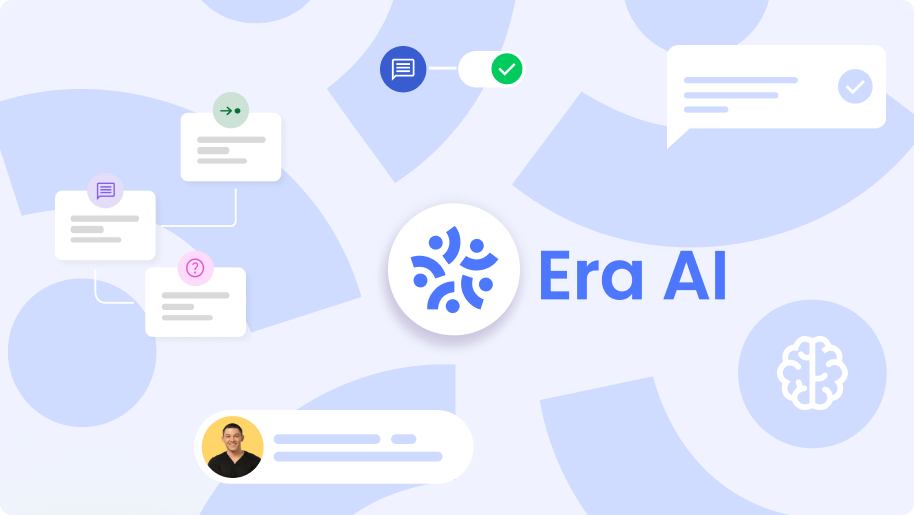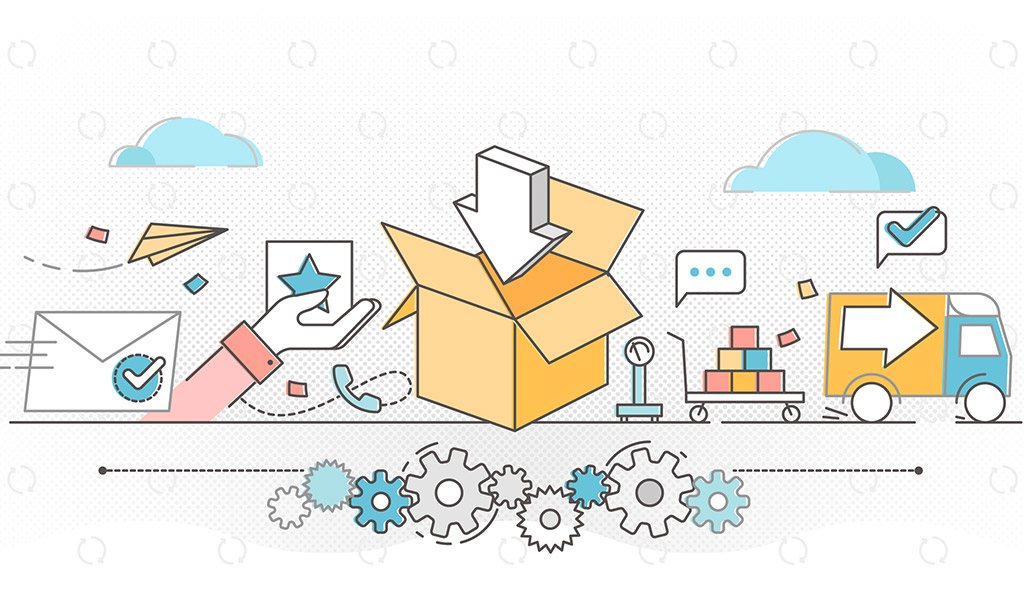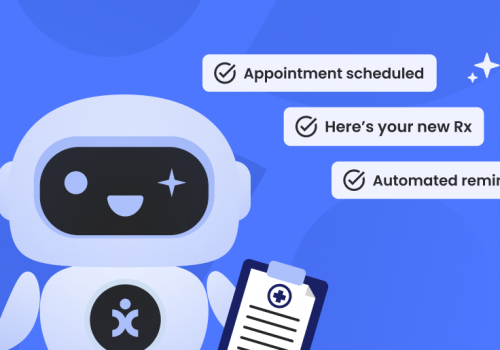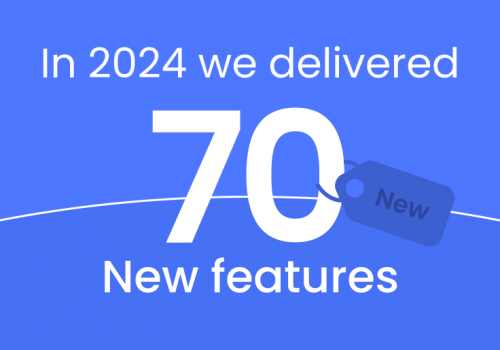Customer Service Workflows. Put simply, a workflow is a sequence of tasks that need to be done to complete a goal. It’s the way that people get work done – they follow a series of repeatable tasks that are set out in a workflow. Workflows help give direction and clarity to many tasks within a business. The business environment can be busy and chaotic, and one person may have to complete entirely different types of tasks every day.
Workflows exist for almost every element in business. If a goal requires several tasks to complete it, then you can make a workflow. So, what about customer service? Today we’re going to look at 6 types of customer service workflows as well as why workflows are important for improving the customer experience.
6 Customer Service Workflows for Improving Customer Experience
1. Customer Onboarding
Customer onboarding is essential to a successful business. All businesses want to enjoy some form of passive customer influx. You spend money on marketing so that the customers come to you. They find your website, sign up for your newsletter or buy a product. However, if you fail to connect with customers early on, you can lose them forever. This is what customer onboarding is all about.
A customer onboarding workflow might look like this:
Welcome Email > First Login > Product tutorial email > Engagement email (2/3 weeks later).
At this point, you can decide whether the customer is engaged. Have they clicked on the emails? Have they followed tutorials? How many times have they logged into the website? Each business will set their own thresholds for what engagement or interest looks like for a new customer. Whatever the threshold is, customers should be separated based on whether they meet the criteria or not. Engaged customers may get put in Group 1. These customers can be sent more information such as webinars or digital events.
Customers who are not engaged will be placed in Group 2. It’s not a good idea to keep sending regular emails with more information about your business and products to these customers. They are demonstrating that they are not interested, and if you keep pushing, you risk turning their opinion from disinterested to annoyed. Instead, you should send Group 2 customer communications only when there is a significant sale on your products. This may persuade them to buy your products, giving them the push, they need to become engaged.
When we say significant sales, we mean a planned sale that would be attractive to these customers. It’s not a good idea to try and game this mechanic by sending regular emails to these customers with slightly discounted products. If the consumer is completely disengaged from your company, for example, they are not opening the emails and maybe haven’t even completed the signup process. Don’t frustrate them by spamming them with emails, you are more likely to encourage them to unsubscribe than convert them into a customer.
If you think two groups are too narrow, you can create three groups, or even four, five, six, or seven. The onboarding can be personalized to better meet the expectations of these groups.
2. Customer Issue Resolution
Customer issue resolution is the steps that need to be taken to successfully solve a customer complaint. It’s critical to get issue resolution right, otherwise, customers can become frustrated. If you get it wrong, they might think your agent (and your company by extension) is incompetent. They might think that you don’t care about their issue or them as a customer. This can be the nail in the coffin for customer experience!
A customer issue resolution workflow might look like this:
Customer reports and issue > a ticket is generated, and severity level/priority is assigned > Customer is assigned the best agent > Interaction between customer/agent to resolve the issue

The next step is the interaction between the agent and the customer. These actions will happen at this stage:
- The agent greets the customer in a friendly way and asks them to explain the issue.
- The agent listens intently
- They repeat the issue back to the customer for confirmation.
- They explain to the customer how the problem will be resolved and keep the customer on the line while this is done (if possible).
- Once the issue has been resolved, the agent will ask if there is anything else they can help the customer with (a second issue). If the answer is no, then the call will be closed after a polite goodbye.
- The customer will receive an email or message as a receipt of their issue being resolved.
3. Technical Issue Resolution
Technical issue resolution is an important part of improving customer experience. Customer service and technical support are included under the same umbrella of customer support, but they are distinct roles that require distinct workflows. Customer service is focused more on the customer experience. Customer service reps want customers to walk away with a positive feeling. They want the customer to feel at ease and also get a real feel for the brand and what it represents.
By contrast, technical support is focused on the perceived or actual deficiencies or bugs with the product. If the product is not functioning properly, this can have a very negative effect on customer experience, so the technical support team is focused on fixing these issues as quickly as possible. While a customer service agent will spend more time empathizing with the customer and listening intently to their complaint, the technical support agent will typically only ask questions that are needed to fix the problem most efficiently.
Technical support staff may not even talk to the customer at all, but rather receive information from the customer service team and only contact the customer if they need more clarification. With this in mind, this workflow will focus on how technical issues can be fixed quickly and efficiently, rather than how a technical support agent would interact with the customer. Some technical issues are not found by customers at all, but rather people in the business. These technical issues will still harm customer experience if they are not solved quickly. Customers don’t care who found an issue or why it is happening, they only care that they can’t use the product as intended. This may result in feelings of being wronged or the customer may regret buying the product at all.
A technical issue resolution workflow might look like this:
Issue detected > Who found the issue?
This could then split into Business or Customer. Either way, the flow will lead to the same point:
Ticket is opened > Sent to developer for verification > Yes, it can be verified, or No cannot be verified
If the issue cannot be verified (for example, because the customer made an error and there is no technical issue), then the ticket is rejected and the flow ends. If the issue can be verified, then the flow continues:
Ticket is put “in progress” and technical staff are assigned > Testing > Patch created > rolled out > ticket is closed.
4. Customer Engagement
Customer engagement is the interactions between the business and external customers done through various channels such as Facebook, Twitter, SMS, email, Live Chat, WhatsApp, and so on. It’s an essential part of striking up a connection with customers and strengthening brand presence.
Customer engagement is also an important component of developing a great customer experience. At its core, how the business interacts with customers will determine what kind and quality of experience the customer has. Friendly and personalized engagement leads to happier customers. Similarly, branding through communication is a great way of convincing consumers that your brand aligns with their expectations, wants, or values.
A customer engagement workflow might look like this:
Event is triggered by customer action > Relevant content is sent to the customer > Is the link clicked? (Yes/No)
For this first part, the workflow described how the customer takes an action and then the business takes an action based on customer data analysis. For example, if a customer is logged into their account and reads an article on your website about one of your products and maybe even adds it to their bag, then they are telling you important information about their interests. You can then send content relevant to this product or group of products.
If the customer clicks the link, then they are interested, if they don’t, then they are likely not interested.
Link not clicked > Wait 2 days and send different content based on previous analysis
Linked clicked > track preferences and behaviors and tag customers with updated information > Send relevant products.
If the customer has already purchased the product, you can instead send a survey or even a testimonial.

5. Customer Billing, Orders, and Returns
This is all about how financials are handled when customers are involved. The customer will need confirmation of their payment and the business will need a clear record of it, as well as a robust process for getting the product to the customer. If something goes wrong here, there is a huge potential to harm the customer experience.
If the customer buys a product but doesn’t get a receipt, they may become anxious that the business will not send the product even though the money has been taken from their account. If the product never arrives with the customer because there has been a workflow breakdown on the business side, then the customer may feel conned.
Billing/ Ordering workflow:
Customer orders product > Confirmation email/receipt is generated > Information sent to accounting team > Shipment process created > product is dispatched > product arrives to customer > order is closed.
Returns workflow:
The customer starts returns process > Eligibility is determined
If the customer is not eligible for a return, the process stops. If they are eligible, it continues.
Credit process is started > Product is returned to inventory > Credit or refund is applied to the customer.
6. Inbound Contact (Calls, Messages)
This is about how the first contact is handled with customers when they approach the business. Getting this right is so crucial to the customer having a good experience. The customer has chosen to contact the business, so they will have clear expectations and goals for this interaction. They may have a serious issue with a product, or it may just be a routine question. Either way, it’s essential that this interaction is tightly orchestrated.
Customer establishes contact > Customer is greeted by agent following script > Agent asks, “How can I help you today?” > Agent listens to customer > Agent determines a route for customer satisfaction > Customer has issue resolved.
This is the workflow at its most basic level. There are many more workflows that can be broken down for inbound contact. For example, customer wait times, resolution times, average handling time, and so on. Each of these can have its own workflow to ensure that the process happens smoothly, and that customer experience is protected at all times.




















